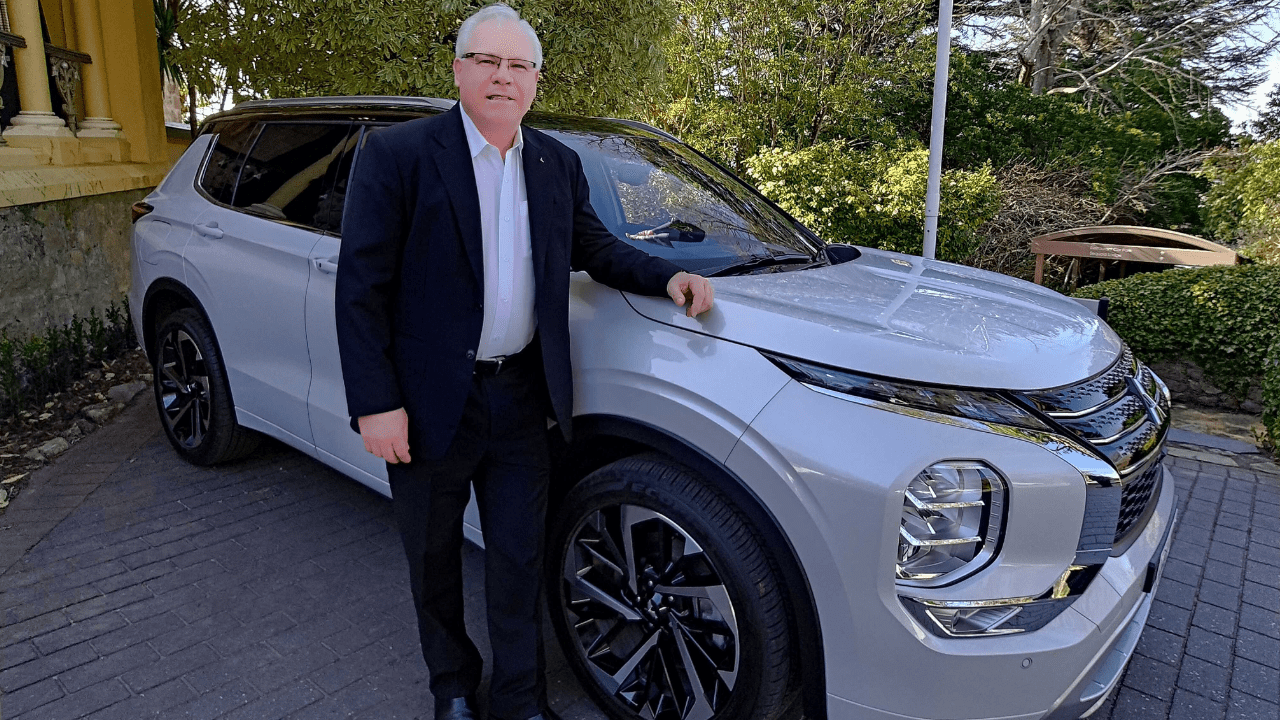As one of Australia’s most popular automakers, Mitsubishi has been holding back internationally from releasing a mainstream electric vehicle. Instead of jumping onto battery EVs, Mitsubishi Australia wants to stick with PHEV (plug-in hybrid electric vehicle) technology… At least for now.
Over in Japan, Mitsubishi recently released the eK X, a short-range EV for inner city driving, developed alongside an identical Nissan model (Mitsubishi, Nissan and Renault have a strategic alliance). It’s not something you’d expect to come to Australia, with a limited range and speed, but that’s the point. Right now, Mitsubishi doesn’t see electric vehicles as a good choice for the Australian market.
On a recent press trip to Adelaide with Mitsubishi, I got the opportunity to speak with Shaun Westcott, the CEO of Mitsubishi Australia.
The Mitsubishi team showed media images of Westcott testing a new vehicle in the Simpson Desert. After chatting with him, it’s clear Westcott is an advocate of cutting emissions, but why isn’t Mitsubishi going all-electric in Australia?
“At the moment, if we had to switch to pure electric, all we’re really doing is shifting the problem from the tailpipe to the power station,” Westcott told Gizmodo Australia.
“We’re in Australia. We’re not in Norway, we’re not in Europe.”
Last year it was reported that 24 per cent of the Australian energy grid was powered by renewables. In Norway, the example cited by Westcott, 98 per cent of the grid is made up of renewable energy.
This is a jaw dropper, by any measure, but it is something that we can work towards in Australia. As we reported earlier this week, the Australian government entered a Bill to cut our emissions by 43 per cent below what it was in 2005, and to do it before 2030. We also reported that the ACT will be phasing out gas power by 2045.
And a lot of these points back to the transport sector.
In 2020, it was reported that the Australian transport sector, as a whole, makes up 18.9 per cent of all emissions. This figure varies at the state level, which is why the ACT is so bent on phasing petroleum vehicles out by 2035 (because the transport sector makes up the majority of emissions in the territory).
So then, why is Mitsubishi bringing PHEV technology back? Why hasn’t Mitsubishi launched an electric competitor to the Hyundai Ioniq 5 or the Kia Niro?
“At the moment, we have insufficient charging infrastructure in this country,” Westcott said.
“It’s going to require billions of dollars and a number of years to build all of that. Whether that money comes from private enterprise or whether it comes from government, it’s going to take time to do that.”
It’s hard to disagree with Westcott on this point in the Australian market. Transition-wise, with 76 per cent of our grid still being powered by fossil fuels, you’re really only transferring emissions from one sector to another by driving an electric vehicle.
That is unless you’re charging your electric vehicle off of your own renewable energy, which many users do. Australia has the most solar per capita of any country in the world, and when we consider daily driving distances, Aussie car owners typically drive for 34 kilometers per day on average (which largely defuses the argument of EVs having a lower range).

The Mitsubishi Eclipse Cross (from last year) and the upcoming Outlander use a battery first and petrol second approach. Where other PHEVs may run battery and petrol motors synchronously, Mitsubishi’s petrol motor functions as a generator, converting fossil fuels into battery energy.
If you go really fast, the petrol engine will start providing energy to the front wheels, but for most uses, it can be functionally an electric car, charged in the garage with the petrol engine disabled at speeds below 70km/h (though the battery of the new Outlander only provides 84km range without petrol-to-battery generation).
“Our customers use our previous generation Outlander in fully electric mode 84 per cent of the time,” Westcott added.
“Other research shows that only 19 per cent of Australians… are prepared to go straight into EV, right now, today.
“What we believe is that our technology allows people to transition. It allows them to experience EV, and the benefits of EV, without having the range anxiety, without having to worry about a charging station… I think it gives you the best of both worlds. We need to inform, educate and expose, which is what we think the PHEV allows us to do. It allows us to reduce emissions by 84 per cent right now with zero dollars spent on infrastructure.”
Westcott was able to confirm that Mitsubishi is moving in the direction of rolling out PHEV technology more across its brand (including in the upcoming revival of RALLIART), though he was unable to provide a timeframe.
Though how long does the PHEV concept have in Australia? What will it take and how long will it take for Australian cars to go all-electric?
Australia doesn’t have fuel-efficiency standards, which electric vehicle lobbyists believe are key to unlocking the EV market in the country, and it’s true that we don’t have a massive array of public electric car charging stations built out.
Though there is enthusiasm to change this, we’ll likely be waiting some time, just as we’ll need to wait for Australia’s grid to become more reliant on renewables.
The future may be electric, but it will take us some time to get there.
